Vigneron A Mareuil Sur Cher
Billecart-Salmon
Cuvée Nicolas François Billecart Brut Champagne Blend 2002
Horsepower Vineyards
Sur Echalas Vineyard Grenache 2016
(Tasted on 7/30/18 with Christophe Baron at Cayuse)
The ‘Sur Echalas Vineyard’ Grenache is a stunning new bottling by superstar vigneron Christophe Baron and assistant vigneronne Elizabeth Bourcier. The head-turning bouquet entices with potpourri, wild strawberry, tobacco leaf, wet stone and shades of Umami with blood orange zest and charcuterie on this highly complex and satisfying nose. The palate is lithe and light on its feet, as the wine simply dazzles across the palate. The marvelous salinity produces gobs of mouth-watering acidity. Leather, tarragon, orange zest, red cherry candy and shades of guava puree with white truffle shavings all round out this highly gratifying palate. The range imparted in the wine is second to none. The texture to this wine is also absolutely gorgeous as the wine has a seamless quality that gracefully dances across the mid-palate. Monumental, profound and a delight to savor now, this ‘Sur Echalas’ Grenache up there with the best of its kind in North America. Drink 2019-2029- 99
— 6 years ago
Philipponnat
Extra Brut Mareuil sur Ay Champagne Blend 2008
Stunning mineral driven 100% Pinot Noir ages 10 years on the lees .restrained with incredible depth and power realty opened up with air revealing notes of apple , spice , nougat . Very dry but the pristine fruit carries thru the acidity. What a beauty . — 7 years ago
Domaine Greiner
Alsace Gewurztraminer
Color : White
Wine estate : Domaine Greiner
Designation : Alsace
Name : Gewürztraminer
Country : France
Vivino : 4/5
Note : In blind tasting with two other wines better rated, it becomes an incredible surprise with a freshness and a fascinating aromatic and very pleasant. In the mouth, a beautiful length, we feel the team work of the winemaker. The family team is authentic and very welcoming, highly recommended!
A final on ripe fruits, a little caramelized and a sweetness in conclusion.
----------
En dégustation à l’aveugle avec deux autre vins mieux cotés, il devient une incroyable surprise avec une fraîcheur et une aromatique prenante et très agréable. En bouche, une belle longueur, on sent le travail en équipe du vigneron. L’équipe familiale est authentique et très accueillante, fortement recommandé !
Une finale sur les fruits mûres, un peu caramélisé et une douceur en conclusion.
----------
👍🏻Vivino, FB : GabWine | IG : gabriel_dvl 🥂 — 7 years ago
Philipponnat
Clos des Goisses Brut Champagne Blend 1996
Needed to take its own sweet time coming to its senses in the glass... slightly oxidized at first, and becoming more and more enjoyable after a while. Stunning for a 20+ year bubbly. Lovely too. — 8 years ago
Domaine Bruno Clair
Les Champs Perdrix Vosne-Romanee 1er Cru Pinot Noir 2009
Rubis brillant
Nez fruit rouge groseille épices notes viandées
Bouche attaque un peu sur l alcool et sur l acidite
Milieu un peu aqueux
Finale longue sur l epice mais un peu trop sur l alcool et matière trop tendue
Pour moi un vin doit aller plus loin ici l empreinte du vigneron domine l appelation
A l aveugle j aurais dit Morey ou chambolle mais pas vosne — 8 years ago
R. Pouillon & Fils
Solera Brut 1er Cru Champagne Blend
A good champagne. Drank kind of… young? Balanced but not graceful, hefty but a little too eager. All of the flavor was BOOM, right up front, and it was more green apple rind than anything. Good - maybe not my thing. — 4 years ago
Antoine Bouvet
Extra Brut Champagne Blend 2012
Clear blonde with a multitude of fine bubbles, really attractive and nice perlage. Very pure aromas on the nose with honeyed toast, white grapes, and a little peach. A touch of oak and apricot. There’s a definite sense of rusticity here and it’s quite welcome here. After plenty of time, those fruit notes become more mature with dates and the faintest hint of dried cherries.
An outstanding grower champagne and one that, for me, really epitomizes the genre. A bit stark and austere, which is a good thing. Half Chardonnay, half Pinot Noir with an extra brut dosage of 3 g/l. The terroir truly speaks here hailing from Bisseuil and Mareuil-Sur-Ay. Very nice acidity and quite vinous in nature.
The palate is generous and inviting especially if you give it time. Almonds, lime zest, and plenty of brioche bread. Green apples with an earthy element as the Pinot begins to take over. A truly exciting champagne that will deliver even more if you let it sit for a few more years. But I can’t blame you if you don’t.
— 5 years ago
Billecart-Salmon
Cuvée Elisabeth Salmon Brut Rosé Champagne 2007
🏅Rating 92/100 (4,2⭐)
I always struggle with rose champagnes. Somehow they don't convince me and almost never justify the price tag. But there are a few which I am satisfied with.
Cuvee Elisabeth is definitely in my top list. Its first vintage is 1988 and was created as a counterpart to another prestige cuvee of the house Nicolas François.
This cuvee is about the elegance and finesse rather than the power. Made of equal parts of Chardonnay and Pinot Noir it is blended with less than 10% of red wine from old vines in Mareuil-sur-Aÿ.
Chic rose color with copper hue. Reductive style with a cooler 2007 vintage showing through. Apricot jam, candied citrus, sugar powdered red berries. Delicate bitter cool and dry finish. Disg. in Feb 2019 after spending impressive 11 years on lees. The dosage of 6 g/l is enough to reach the perfect balance.
---
Instagram: @wine_talks_club — 5 years ago
Vigneron a Mareuil sur Cher
Les Sucettes a l'Aunis Pineau d'Aunis
initially smelt of burnt rubber but opens up into an airy woodsy place with hints of sweetness. hints of jam, pepper, and tart blackberries. super light finish. — 7 years ago
Marc Hébrart
Cuvée de Réserve Brut 1er Cru Champagne Blend
A very soft balanced Rośe Champagne — 7 years ago
Marc Hébrart
Blanc de Blancs Brut 1er Cru Champagne Chardonnay
Bursts in the mouth.... dry, astringent with wet stone, lemon rind and sourdough bread. Very savory. NV but I think could use a little time to calm down but that will be hard since the flavor profile is so amazing. — 7 years ago
Bollinger
Brut Rosé Champagne Blend
On the nose; bright cherries, ripe strawberry & cranberry reduction, black raspberries, raspberries, watermelon near the rhine, mixed orange citrus, oyster shells, baguette crust, understated volcanic minerals, chalk, saline, fresh pink roses and florals. The body is full and a shade gluey. The fruits are ripe, rich and candied/gummy in style. Bright cherries, black cherries ripe strawberry & cranberry reduction, black raspberries, raspberries, watermelon near the rhine, mixed orange citrus spray, saline, seashells, soft grey volcanic minerals, lots of grippy powdery razor sharp chalkiness, baguette crust, fresh pink roses & florals, acidity that is round and well done, understated delicate micro bubbles and a long, well balanced, rich finish. The reason why I prefer the Billecart Salmon, Ruinart & Laurent Perrier over the Bollinger is it’s a little too sweet for me. Photos of; the House of Bollinger, cellar, headstone that marks one of their vineyards and their harvest staff picking perfectly manicured rows. Producer notes and history...Bollinger has roots dating back to 1585 when the Hennequins, one of the Bollinger founding families, owned land in Cramant. Before the Bollinger house was founded in the 18th century, the Villermont family practised wine making, though not under their family name. In 1750, Villermont settled at 16 rue Jules Lobet, which would eventually become the head office for Bollinger. In 1803 Jacques Joseph Placide Bollinger was born in Ellwangen, in the kingdom of Württemberg. In 1822, he moved to Champagne and found work at the house of Muller Ruinart, which no longer exists. Many other Germans came to settle in the Champagne region, including Johann-Josef Krug and the Heidsiecks, who founded a house that would become; Charles Heidsieck, Piper Heidsieck, Veuve Clicquot and others. The Champagne house Renaudin Bollinger was founded in 1829 in Aÿ by Hennequin de Villermont, Paul Levieux Renaudin and Jacques Bollinger. The partners agreed that the Villermont name would not be used on the labels, hence the house name Renaudin Bollinger. Starting when Jacques Bollinger married Charlotte de Villermont, the house has been managed by the Bollinger family. Even though Paul Renaudin passed without an heir to his name, the label did not become solely Bollinger until the 1960s. Founder Jacques Joseph Bollinger married Charlotte de Villermont. The had a daughter, who had two sons Joseph and Georges. These sons took over the company in 1885 and began expanding the family estate by purchasing vineyards in nearby villages. The sons also developed the image of the brand, such as when Bollinger became the official supplier to the British court and received a Royal Warrant in 1884 from Queen Victoria. In 1918, Jacques Bollinger, the son of Georges, took over the company and married Emily Law de Lauriston Boubers, known as "Lily". Jacques expanded the facilities by building new cellars, purchasing the Tauxières vineyards, and acquiring the assets of another Champagne house on Boulevard du Maréchal de Lattre de Tassign, where Bollinger's offices are presently located. When Jacques Bollinger died in 1941, Lily Bollinger took over. Lilly expanded production with the purchase of even more vineyards, but is best known for traveling the world to market the brand. Bollinger was modernized under the Claude d'Hautefeuille, who acquired additional vineyards and further developed the brand internationally. Following Claude, his cousin Christian Bizot took over the Bollinger house and expanded world distribution. Their Winemaker also used several James Bond film movies to market the brand. Bollinger is fermented in oak barrels. At harvest, only the first pressing is used in the cuvée, unless the vintage is of particularly high quality, when a second pressing of Chardonnay will be used. Bollinger sells the second pressing, the tailles. Bollinger utilizes two pressing houses (Louvois and Mareuil sur Aÿ) to ensure a short distance between harvest location and pressing. When possible, grapes purchased from growers are pressed by the house. When the pressed wine arrives, the Bollinger cellar master analyzes the musts for quality, discarding and selling off those that do not meet the house standards. The first fermentation is done cru by cru, variety by variety, preserving many of the unique characteristics of the vines location. Bollinger is one of the few Champagne houses to do some first fermentation in oak barrels. Wines that will not hold up to first fermentation in wood are vinified in vats. Bollinger Champagnes usually undergo malolactic fermentation. The Grande Année 1995 did not undergo malolactic fermentation. Bollinger uses only traditional yeast. They’ve decided that new generations of yeasts (agglomerated yeasts and encapsulated yeasts) do not produce satisfactory Champagne. Vintage wine, including all wine to be used in a Grande Année, is fermented in small oak barrels, sorted according to origin and variety. Both oak and stainless steel are used for non-vintage wine. Bollinger also has the last Cooperage in Champagne. The oak barrels are all at least four years old, avoiding the transfer of tannins to the wine. The wines are only lightly filtered. All Bollinger Champagne spends a long time on its lees, contributing to the complex flavour of the wine. Though appellation d'origine contrôlée rules only require 12 months on lees for non-vintage Champagne and for vintage (NV wines, 15 months from tirage to release and vintage wines must be kept for 36 months from tirage to release), Bollinger ages their non-vintage wines three years, and the vintage wines from five to eight years. The Grande Année and R.D. Champagnes are riddled by hand. At disgorgement, Bollinger wines are given a low dosage, to maintain the balance and flavor of the wine. The company uses 6-9 grams of sugar per liter for the Special Cuvée and La Grande Année. The extra-brut R.D. is dosed between 4 and 5 grams. After dosage, the wines are aged an additional several months, resting for a minimum of three months before shipping. Bollinger owns nearly 160 hectares of vines, producing more than 60% of its supply. The vines are largely Pinot Noir, specifically clone 386. Bollinger believes this clone ensures good quality as well as highlighting characteristics of the various terroirs. The vineyards also include some rare ungrafted French vines from before the phylloxera. Bollinger owns vines all over Champagne, including the crus of Aÿ, Bouzy and Verzenay. — 8 years ago

I figured a real keyboard needed to be involved, thanks for the insight.
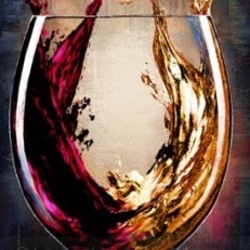
Marc Hébrart
Brut Mareuil-Sur-Ay Champagne Chardonnay - Pinot Noir Rosé Blend
I don’t think you can get any more perfect for a Rose. Just the right amount of acid and lift and length. Muted berry and stone fruit nose. Red and blue fruits, clean and mouth watering. Love this! Chardonnay 55%, Pinot Noir 38.5%, Mareuil Rouge 6.5% disgorged May 6, 2020. WHW — 4 years ago
Karim Vionnet
Vin de Kav Chiroubles Gamay 2018
A winegrower that I have been following with passion for several years: Explosive bouquet of fruits and flowers, enhanced with cinnamon notes. A "natural" Beaujolais Gamay, light and crunchy in the first hours after opening. Then the wine unfolds and unfolds again. After 12 hours, the wine is round. The acidity is lively and the tannins are both tight and opulent. It is delicate and full. Wonderful on a home-made marguerita pizza (with arugula).
Un vigneron que je suis depuis quelques années avec passion. Bouquet explosif de fruits et de fleurs, rehaussé de notes cannelées. Un gamay « nature » du Beaujolais, léger et croquant au premières heures après l’ouverture. Puis le vin se déploie et se déploie encore. Après 12h on a un vin rond, ample, l’acidité est vive et les tanins sont à la fois serrés et opulents. C’est fin délicat et ample. Magnifique sur une pizza marguerita home-made (avec de la roquette). — 5 years ago
Marc Hébrart
Brut 1er Cru Blanc de Blancs
A pale straw color with a generous amount of tiny bubbles. A fine mousse and bead. This is an incredibly alive champagne and it starts immediately. Meyer lemons and tart green apples, along with smoke and mint on the nose. That wonderful citrus streak continues throughout.
100% Chardonnay primarily from Mareuil-sur-Ay and Chouilly. Family owned grower and one of my favorite producers with such consistent quality. Richer and fuller than many others, it’s round and vibrant. Lovely depth and acidity with a backbone of herbs and spices.
Chalky minerality and crystallized honey shine here. Beautiful toasted bread and almonds on display, along with more green apples and lemons. Apricots, plums, and peaches sing a lovely song. Chamomile and more honey on the long, exceedingly pleasant finish. A highly attractive pour. — 5 years ago
Marc Hébrart
Sélection Brut 1er Cru Champagne Blend
Heck of a hosting by @Weston Eidson last night for the City Club wine group. All wines were tasted blind.
This was very light and refreshing. Could see this being super easy to sip on these hot TX summer days. Tons of green apple, pear, citrus and chalky limestone. Right down the middle. I called this non vintage champagne. — 6 years ago
L. Bérnard-Pitois
Carte Blanche 1er Cru Brut Champagne Blend
All you could want in a champagne for $40. — 7 years ago
Cave du Vieux-Moulin (Romain Papilloud)
Grand Cru Amigne de Vetroz 2016
Color : White
Wine estate : Romain Papilloud
Designation : Vétroz (AOC Valais)
Name : Amigne Grand Cru de Vétroz
Country : Switzerland
Vivino : 4/5
Note : Romain Papilloud, self-made-man, became a winemaker in 1979 and owner in 1987. The majority of his vineyard is located in Vétroz (Valais, Switzerland). We will observe on the top of the bottle 1 to 3 bees which represents the sugar content (A bee means 0 to 8 grams).
With a yellow robe, the nose of this amine is rich with flavors of citrus (tangerine) and honey. On the palate, a beautiful structure with apricot flavors and a delicacy in the end.
----------
Romain Papilloud, autodidacte, devient vigneron en 1979 et propriétaire en 1987. La majorité de son vignoble est situé à Vétroz (Valais, Suisse). On observera sur le haut de la bouteille 1 à 3 abeilles qui représente la teneur en sucre (Une abeille signifie 0 à 8 grammes).
Avec une robe jaune, le nez de cette amigne est riche avec des saveurs d’agrumes (mandarine) et de miel. En bouche, une belle structure avec des saveurs d’abricot et une gourmandise en final.
----------
👍🏻Vivino, FB : GabWine | IG : gabriel_dvl 🥂 — 7 years ago
R. Pouillon & Fils
Réserve Brut Champagne Blend
Bought this lovely Champagne at a wine shop in the Marais near Village St. Paul in Paris. Asking for a good pairing with Munster, it works very well with the strong cheese. The yeasty flavours of both cheese and champagne are a good match for each other. — 8 years ago


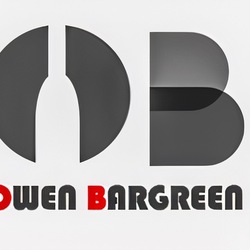




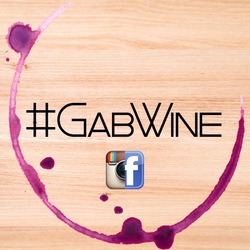
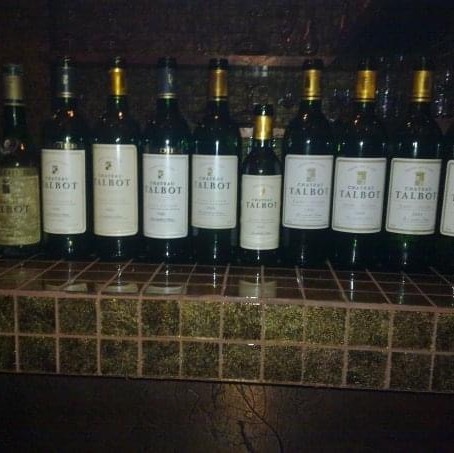




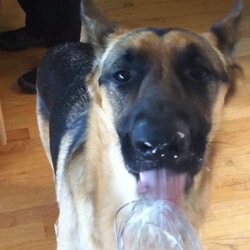
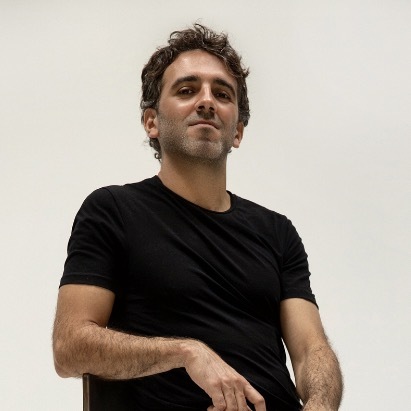

Vanessa
Today we began with a visit to Billecart-Salmon, which has been family owned since 1818. They are 7 generations strong, producing between 2 and 2.5 million bottles per year. We received our informative tour from Jérôme Lafouge. 👏
He explained how Billecart-Salmon grows and manages many of the vines used to produce their wines; they also source grapes 🍇 from other growers, but otherwise own the production process from the pressing of the grapes on… the facilities are pristine and processes are executed meticulously.
Each wine is vinified by vineyard plot. A unique feature of Billecart-Salmon is its decision to have a slow, cool fermentation process for all of its wine - both those vinified in barrels and those in stainless steel tanks - a process that takes 6 weeks to complete.
Each winemaking decision is customized based upon the type and condition of the grapes, e.g., some undergo a malolactic fermentation (where tart malic acid is converted to soft, lactic acid) while others may not, some have a first fermentation in oak where as some are stainless steel, etc.
At the end of our tour we had the pleasure to taste a few beautiful wines (pictured here).
Our favorite was the 2002 Vintage Cuvée Nicolas François comprised of 60% Pinot Noir from Mareuil-Sur-Aÿ, Aÿ, Ambonnay, and Verzenay and 40% Chardonnay from Chouilly, Cramant, and Avize.
This wine was clearly developing lovely tertiary aromas. It also had great complexity retaining its primary and secondary notes. It was disgorged January of 2016, resting over a decade on the lees.
The aromas and palate had caramel, toffee, brioche, pie crust, toast, hazelnut, cream, melted butter, honey, ginger, candied lemon peel, quince, fig, and chamomile notes.
What an enjoyable experience and we loved meeting some new friends on the tour from Savannah, Georgia and Canada.
Santé mes amis 🥂🥂🥂 — 4 years ago